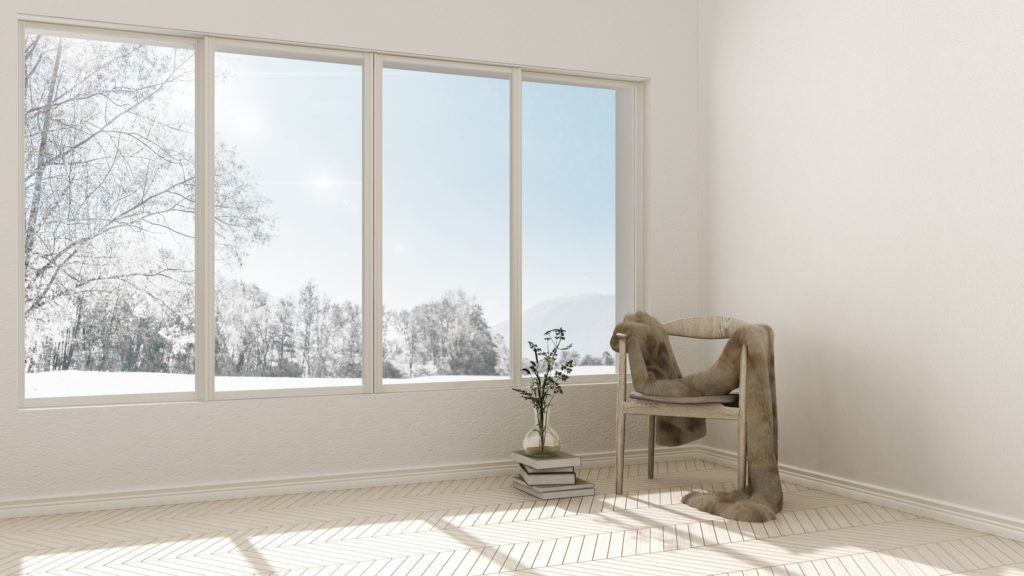As we progress deeper into the winter months and temperatures creep closer and closer towards 0°C, many people will be concerned about the cost of heating their houses to ward off the cold. It can be a particularly worrying time if you live in a cold house with poor insulation.
With this in mind, which kinds of improvements can you make to improve the heat insulation of your house and save yourself some money? This guide covers various ways of achieving a warmer home, discussing the benefits of double glazing, heat-insulating doors, home insulation, and efficient heating systems.
The benefits of double glazing
If your home still has single-glazed windows, then improving them is an excellent place to start in your efforts to keep your house warm this winter. Replacing your windows with Nottingham made double-glazed windows (or even triple-glazed windows) is an extremely effective means of retaining heat in your home and reducing your heating bills.
The U rating system is used to compare the heat-insulating properties of window glazing and other forms of home insulation. Traditional single-glazed windows have a U value of around 5.0W/m²k, whilst the double-glazed kind can have a U value of anywhere between 1.3 and 3.0W/m²k.

To put this into perspective, the current building regulations in the UK require houses to be built with windows that have a U value of no less than 1.6W/m²k. Triple-glazed windows, on the other hand, tend to have U values of between 0.5 and 0.8W/m²k. It’s worth noting that double glazing is slightly more cost-effective than triple glazing (though triple glazing provides the maximum insulation possible).
As well as keeping extra heat in your home, double- or triple-glazed windows have a number of other positive side effects. They offer exceptional sound insulation, blocking out noises from outside much more effectively than their single-glazed counterparts. Equally, they are much more secure and will rarely suffer from internal condensation.
Heat-insulating doors
Doors can be enhanced in several ways to increase their heat-retention capabilities. It’s important to buy external doors that use double- or triple-glazed glass if they have windows (the doors sold by KLG Rutland all meet this standard).
In addition to choosing the right glazing, doors should feature perimeter seals to exclude any draughts and keep the warmth in. Moreover, the material itself should be selected with heat insulation in mind: all of KLG’s doors are made with naturally insulating materials.
Home insulation
The average British home leaks out one-third of the heat produced by the heating system straight away through the roof, floors, and ceilings. As such, it’s really important that your house has the best insulation, particularly in all of the cavities adjacent to outside surfaces.
Some forms of insulation are easier to retrofit than others. Roof insulation is generally relatively easy to add in long after your home has been built (although it depends on the conditions in your loft, of course). This can be done with mineral wool or fibreglass – even better, you can either hire a contractor or do it yourself!
The depth of your roof insulation should depend on the type of material that you use. For mineral wool insulation, the recommended depth is approximately 270mm. If you’re using fibreglass, then it’s advisable to pad your loft to a depth of at least 250mm.
With regard to wall insulation, if your home has cavity walls that weren’t properly insulated to begin with, it can be difficult to make changes without creating a mess. It’s a good idea to add cavity wall insulation at a time that coincides with a redecoration project. As with roof insulation, this can be done DIY but it may be better to hire a professional for this slightly trickier task.

An often overlooked aspect of home insulation is the floors. Up to 10% of the heat from your home will be lost through the floor surfaces. In some cases, insulated blankets can be added to suspended floor cavities to reduce heat loss. Where floors are placed straight onto concrete, wood can be used to create a separating layer that provides heat insulation.
Efficient heating systems
When it comes to the choice between gas and oil or electric heating systems, the two main considerations are the cost savings and the energy efficiency (although these factors can be interconnected, the cheapest system may not always be the most efficient method of heating your home).
Electric heaters are usually close to 100% efficient in terms of energy, whilst gas and oil heating systems tend to be closer to 90% energy efficient. Despite this, electric heating systems are the most expensive to run whilst gas systems are the cheapest, due to the amount of energy they consume.
It’s important to consider which forms of heating systems are applicable in the case of your home. Not all homes can have a gas supply on account of their location, so you may be reliant on deliveries of liquid petroleum gas (LPG) or oil to keep your heating running. These vary between 80 and 95% energy efficiency and the cost is usually somewhere between mains gas and electric.
Whatever your budget, there are options available to you when it comes to keeping your home warm and saving money during the winter months. For example, DIY loft insulation is a quick, easy, and cost-effective method of keeping the heat in your home. Those who have enough time and money could adopt a belt and braces approach, combining several of the methods discussed in this guide. Ultimately, it’s important to choose improvements that match your home and your budget.


